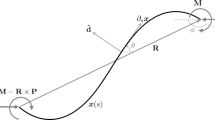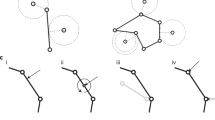Abstract
Without assuming a spheroidal shape for the cell, more general approximate deformation equations are derived which allow for non-uniformities in the external diffusion field and within the cell itself. It is found that in the absence of such non-uniformities, however, the only stable shapes are those in which the cell is spheroidal. Moreover, in conformity with previous results derived by somewhat different approximations, it is found that the spherical equilibrium is always stable and the approach monotonic unless, for a sufficiently large volume or a sufficiently high metabolic rate, there exist two non-spherical equilibria, one of prolate type and one of oblate type.
Similar content being viewed by others
Literature
Householder, A. S. 1941. “Mathematical Biophysics of Cellular Forms and Movements.”Bull. Math. Biophysics,3, 27–38.
Rashevsky, N. 1940.Advances and Applications of Mathematical Biology. Chicago: University of Chicago Press.
Williamson, Robert R. “Growth, Organization and Differentiation in Cellular Aggregates.” To be published.
Author information
Authors and Affiliations
Rights and permissions
About this article
Cite this article
Householder, A.S. Cellular forms: The tri-axial cell. I. Bulletin of Mathematical Biophysics 4, 159–168 (1942). https://doi.org/10.1007/BF02478111
Issue Date:
DOI: https://doi.org/10.1007/BF02478111




